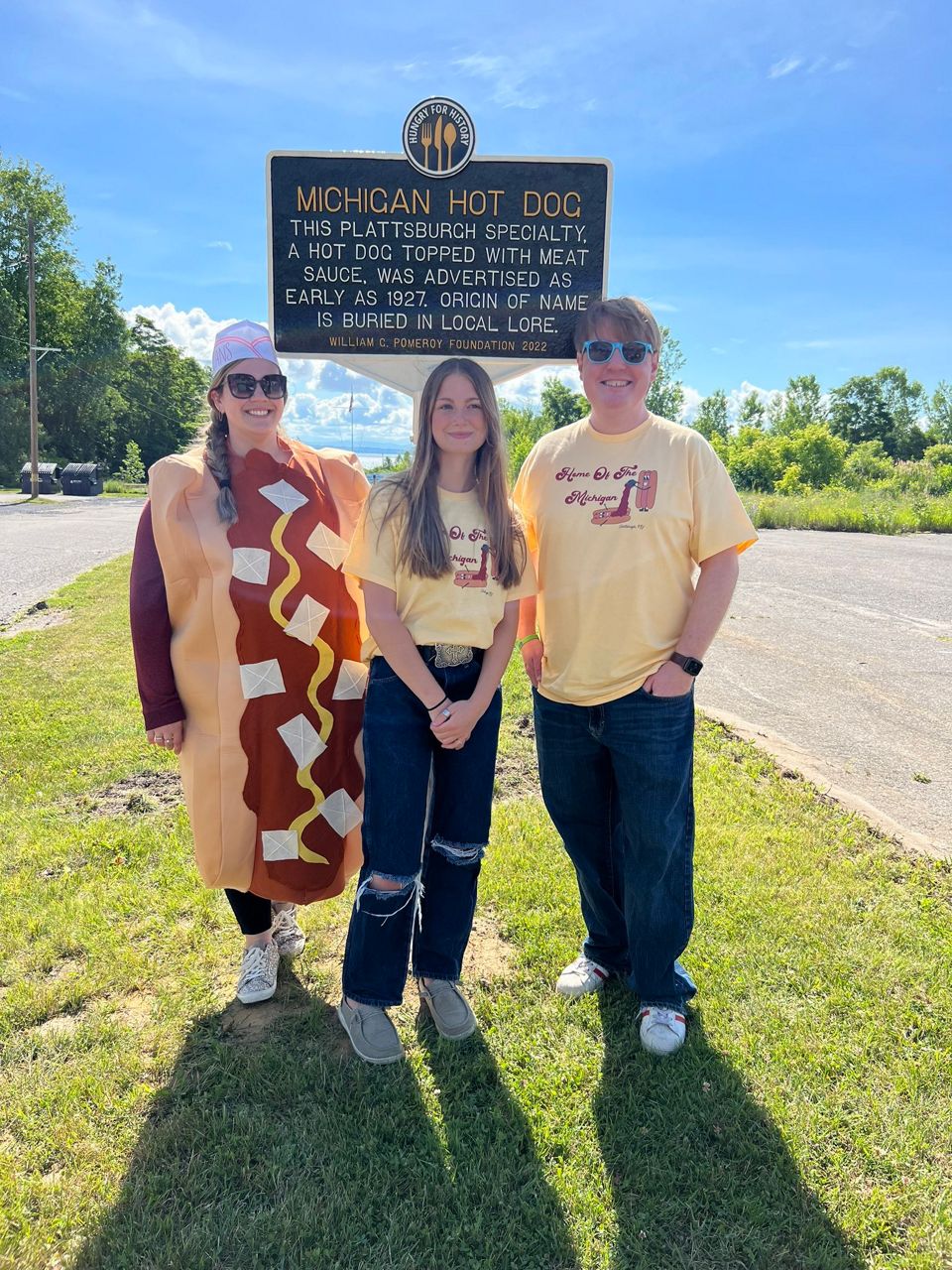Hot dogs topped with all kinds of ingredients can be found all around the country. But in New York’s North Country, a hot dog topped with a unique meat sauce has been making mouths water since the 1920s.
It’s called the michigan. And while the name and recipe is still a bit of a mystery there are plenty of theories on where it came from.
To best explain what michigan sauce tastes, like let’s go over what it isn’t. There’s no beans or paste like a chili dog. While it’s filled with spices, it’s not a taco sauce. Michigan sauce is made with finely mashed ground beef, tomato sauce, and an array of spices prepared in a slow cooker. While you’ll can find basic recipes online several restaurants claim theirs is a closely guarded secret.
Most connoisseurs agree there are four key elements to a michigan: a steamed roll, a boiled hot dog, mustard, chopped onions on top of, or "buried" beneath, the sauce. And of course, the sauce, which is the most important part.
"Our sauce is a little bit spicier than everyone else's," said Mike Farrell.
Farrell and his older brother opened McSweeney’s Red Hots in Plattsburgh in 1991. Thirty years later, the exact flavor behind this popular topping is hard to pinpoint.
"You know, I've never been asked that, ‘what does it taste like?’ I say, if you really want to know, come in and I'll give you the first one on me and let me know if you like it," Farrell said.
Across town, Cary Garcia is carrying on an 80-year tradition. He took over the successful Clare and Carl’s Red Hots six years ago. His sauce has a distinct taste fueled by a mystery ingredient.
“I'm the only one that knows it. My wife doesn't know," Garcia said.
But there’s another question to answer - why do they call them michigans anyway? Well, you won’t find one in the state of Michigan, but there is a connection in a story that dates back to the 1920s. It’s said that a couple moved to Plattsburgh from Detroit and named an adapted Coney dog sauce.
"Her name was Eula Otis. Where Nitzi's is, one of our locations, that was the first location and it was originally called the Michigan Hot Dog Stand," Farrell said.
That’s the widely accepted explanation, but there are plenty of skeptics and claims to the michigan's origin.
"And that’s kind of the fun of it," said Plattsburgh Town Supervisor Michael Cashman.
Like just about everyone else in Plattsburgh, Cashman is a michigan enthusiast. Last year, he officially designated July as the "Month of the michigan."
"We do a passport program where we encourage people to pick up a passport and go to all the michigan stands within the town of Plattsburgh and every year we're going to build upon this buried culture," Cashman added.
The eventual goal is a one-day festival that capitalizes on the enduring popularity of the michigan, all while spreading the word about this unique North Country cuisine.
In addition to the month-long celebration and the michigan passport program, the town was able to secure a grant through the Pomeroy Foundation for a historical marker near Clare and Carl's and the original Nitizi’s. This marker is designed to give the michigan its proper place in North Country lore and history.









